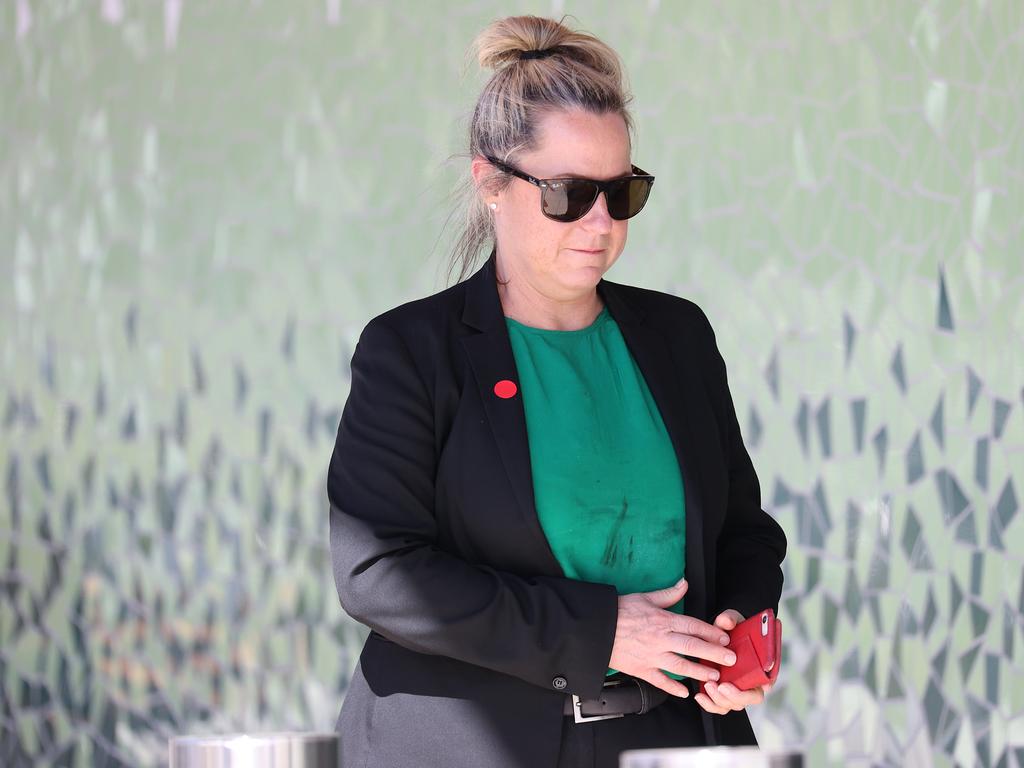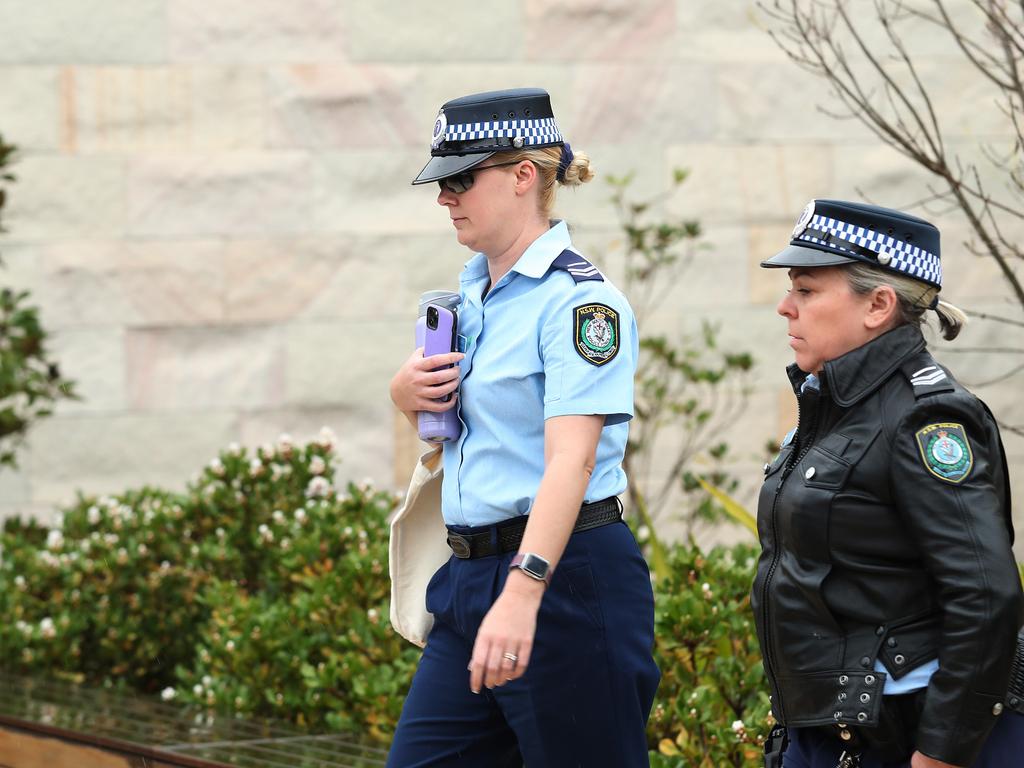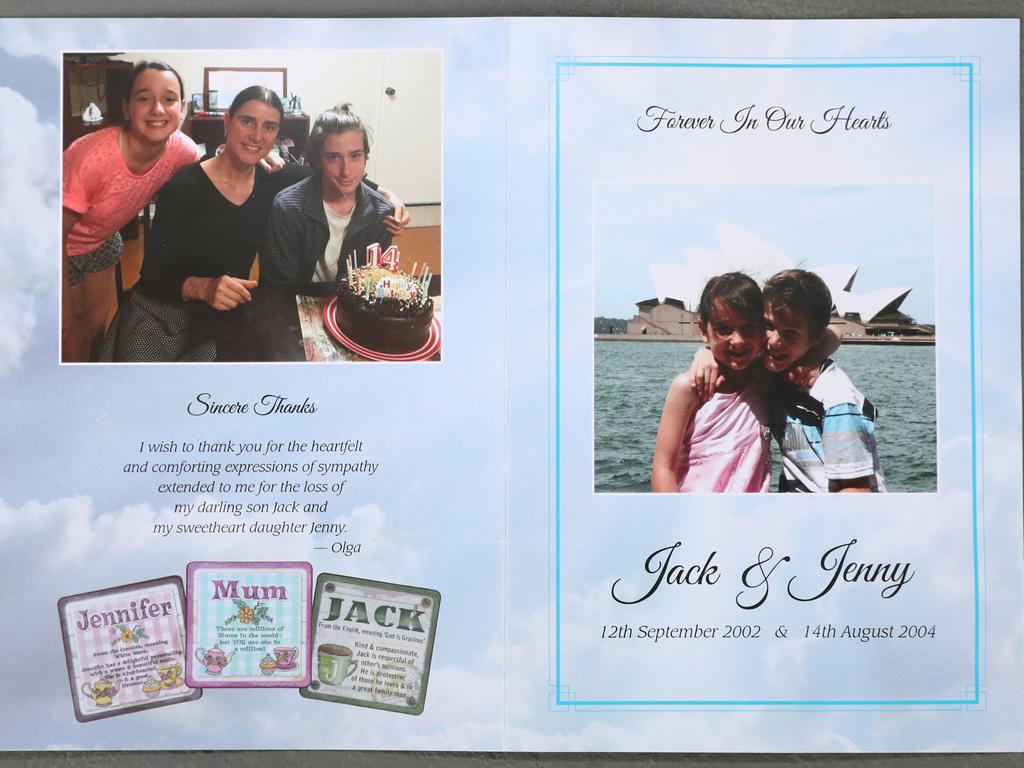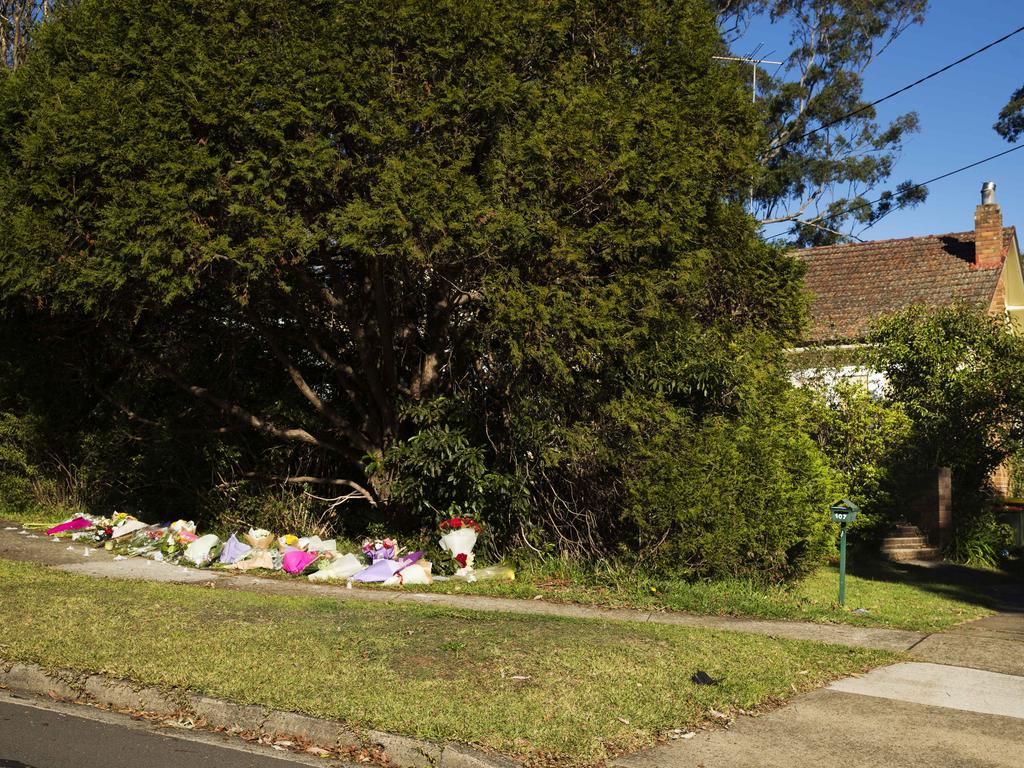Horror note found in John Edwards’ pocket an enduring mystery as systemic failures laid bare
Jack Edwards #JackEdwards

There are not many mysteries left when it comes to what happened to Jack and Jennifer Edwards.
We know too much about the lives of these Sydney teenagers, the violence they suffered at the hands of their father, and the institutions that failed to protect them before he gunned them down in their own home.
We know too about the extraordinary grief of their mother Olga, who took her own life in the house where her children died five months later, unable or unwilling to go on without them.
But two years and nine months after the tragedy, a missing puzzle piece remains: how did John Edwards find his children?
He was not meant to know where Jack, 15, and Jennifer, 13, were living.
But when he killed himself after shooting them dead on July 5, 2018, he had a piece of paper in his top left pocket with Jennifer’s afternoon movements and a train timetable printed on it.
Despite an exhaustive investigation — canvassing the possibility John had hired a private investigator — police have never discovered where that piece of paper came from.
It allowed John to stalk Jennifer from Pennant Hills train station to her West Pennant Hills home and chase her inside, where Jack was glued to the computer game Fortnite.
He arrived at 4.59pm. Jennifer dropped her bag and fled down the hallway to Jack. She assumed the foetal position under his desk. The fiercely protective 15-year-old covered his sister with his body.
John used a Glock pistol to fire 14 rounds at them. At one point, he stopped to reload. He was at the house for two minutes and 11 seconds.
Jack’s game was still buzzing on the monitor when police arrived 40 minutes later.
There is a popular theory of system failure based on, of all things, Swiss cheese. Imagine a pile of slices: each layer is a safety barrier, each hole a weakness.
In recent months, the model has been applied to the coronavirus pandemic. The layers are masks, social distancing, washing hands, staying home. None of these are infallible, but together, they form a strong protection from COVID-19 — so long as the holes do not align.
If the holes line up, the system fails. A path is cleared for an unfolding catastrophe.
Senior Constable Brooke Cooper usually taught bicycle and road safety to children. She had been in that unit for all her 13 years at Hornsby Police Station.
But in the summer of 2016, the station was short-staffed, and Constable Cooper was placed on general duties to make up the numbers. She was behind the desk when Olga walked in the door on December 29 and said John had assaulted their two children.
It was a week after the family law court had ordered Jack and Jennifer to spend three hours with their father every Saturday. At the hearing, independent children’s lawyer Debbie Morton told the judge police put John’s behaviour down to “heavy-handed parenting” — a statement the coroner later found had misled the court.
Constable Cooper’s report of Olga’s complaint was riddled with errors. She wrote down that police “do not hold fears of safety” and believe “this may be a premeditated attempt to influence some future family court and divorce proceedings”.
Her supervisor Sergeant Richard Jackson looked at Constable Cooper’s report for less than two minutes — noting that final paragraph — before giving it the tick of approval.
The matter was not investigated. John was not charged. An apprehended violence order was not brought. And the errors meant the complaint did not show up on a report considered by the NSW Firearms Registry when John was applying for a rifle and a pistol licence in 2017.
Over at the registry, the coroner found, staff were fixated on whether aspiring gun-owners matched the criteria for an automatic refusal. This box-ticking approach was so endemic that staff frequently failed to ask the central question: is this a fit and proper person to own a gun?
This is, in short, how the long history of violence John had perpetrated on a total of seven partners and 10 children over many years went ignored.
Despite the brave complaints some of these women and children had made, and despite a documented 24-year history of domestic violence, John had only ever been the subject of one finalised AVO in 2000.
There were plenty of near misses. Back in 1998, an ex-partner, Ms D, had made it all the way to Downing Centre Local Court after John seriously assaulted her. But the AVO and assault charge were thrown out at court. Ms D said a senior constable at Eastwood Police Station was the only one who believed her.
John’s adult daughter, JC, had taken out an interim AVO against her father in 2011 after several terrifying incidents of stalking. At a hearing, JC said, the prosecutor leaned over and said to her: “He is your father, can’t you just sort this out amongst yourselves?” The hearing was adjourned, but JC moved overseas before the order could be finalised and it lapsed.
John was the Teflon man, an expert at ensuring his transgressions did not stick. He was approved for a rifle and a pistol licence.
Asked to explain how the registry could have possibly concluded John passed the fit and proper person test, a senior supervisor could only say: “I’m not able to. Sorry.”
The family law proceedings were running in parallel. The court was slowly amassing a wealth of information that John physically abused Jack and Jennifer and was controlling and manipulative towards Olga, but the registry was not aware of it.
In February 2018, Olga won full custody. It was around this time, the coroner found, that John made the decision to murder his children.
In April 2018, he bought the Glock pistol.
The holes had just about lined up. The system was on the brink of collapse.
One final, flimsy barrier remained: the closely held secret of Jack, Jennifer and Olga’s address.
But John had that piece of paper in his pocket.
“To describe this as a tragedy is to import a sense of inevitability, that nothing could have been done to change the outcome,” State Coroner Teresa O’Sullivan said on Wednesday.
“Instead, the evidence before this court plainly reveals that the deaths of Jack and Jennifer Edwards were preventable.”
In the wake of Jack and Jennifer’s deaths, NSW Police overhauled the firearms registry and altered domestic violence procedures.
But Magistrate O’Sullivan found the changes already made had not gone far enough. She made 24 recommendations in her 272-page report, most of them aimed at plugging the gaps through which John had fallen so effortlessly.
Some are aimed at gun laws: recommendations to refuse licences to people with provisional and interim AVOs and those convicted of domestic violence offences, and to dump the P650 scheme, which permits unlicensed people to train at shooting ranges without registry oversight.
Others relate to the dangerous link between family court proceedings and violence. Magistrate O’Sullivan called for better information sharing between the courts and police, and called on the government to change the law so anyone involved in family law proceedings at the time they apply for a gun licence must inform the registry.
She also recommended the Office of the Legal Services Commissioner investigate whether disciplinary action should be taken against Ms Morton.
Whether the recommendations force any change — whether they are followed at all — remains to be seen.
After laying out these systemic failures at the bright, airy Coroner’s Court Complex at Lidcombe on Wednesday afternoon, Magistrate O’Sullivan paused. Now it was time to place the events of July 5, 2018, on the record.
The coroner’s voice betrayed the weight of this case. As she uttered each heavy sentence it was easy to conjure up an image of Jennifer, disembarking from the train at Pennant Hills station at 4.44pm.
The 13-year-old had a long commute, but she was extremely proud of having been accepted into her selective school at Gosford. She wanted to be a veterinarian.
She could not have known her father was in the carpark that afternoon, covertly watching her from an unfamiliar white rental car.
She immediately boarded a bus for the second-last leg of her journey, the white sedan trailing behind.
“At 4.50pm,” the coroner said, “Jennifer alighted from the bus on Pennant Hills Road near Mount St and started walking home, which took approximately eight minutes.”
We had reached 4.58pm. The coroner paused again; the next sentence was the point of no return. And as the moment hung in the air, so too did the possibility of another path for that bright, gentle girl, her free-spirited brother, and their devoted mother.
What if police over many years had taken John’s ex-partners and children more seriously? What if the supervisor at Hornsby Station had properly checked his officer’s shoddy paperwork? What if a single person at the firearms registry had taken it upon themselves to look, really look, at John’s history of violence? What if he had never been able to figure out where and when his daughter got off the train?
The system failed. At 4.59pm, CCTV recorded John pulling up outside.
lane.sainty@news.com.au
Read Next







